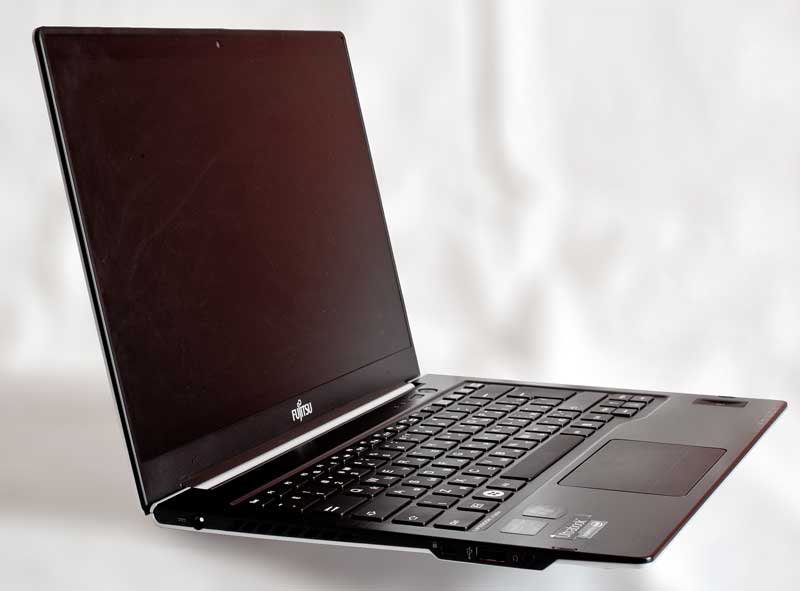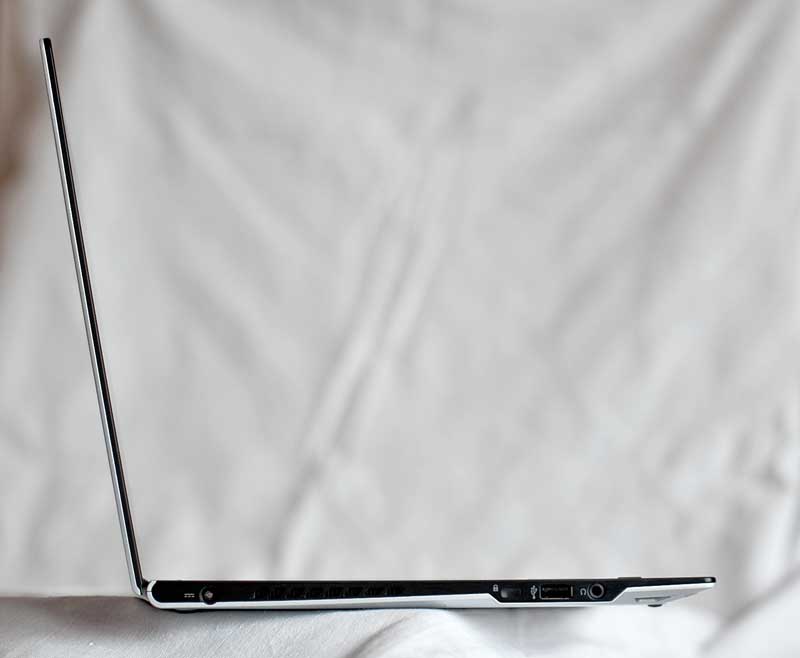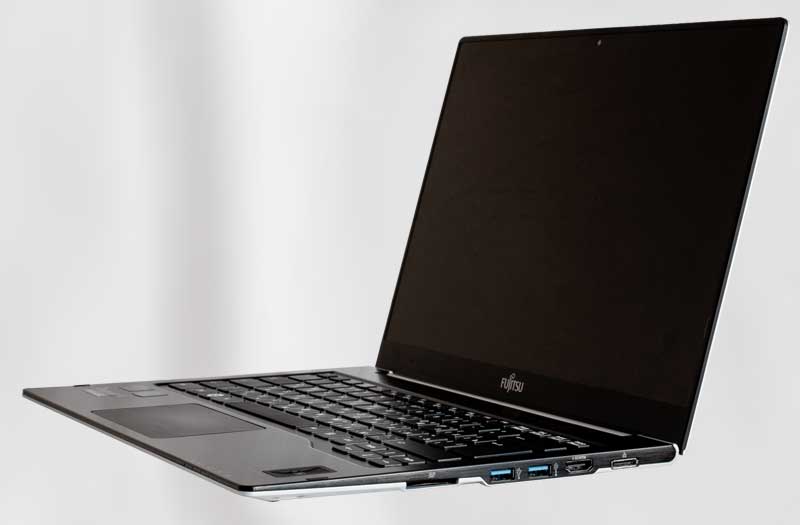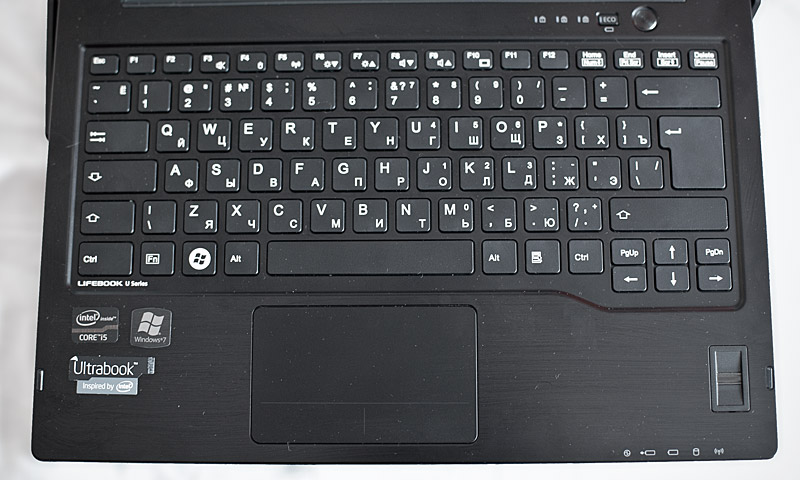Ultrabook Fujitsu Lifebook U772
Many users believe that ultrabooks are the same laptops, only thin and light. In fact, everything is somewhat more complicated. To be eligible to be called an ultrabook, a laptop must meet several strict Intel requirements, not only for weight and thickness, but also for performance, startup time, battery life, and support for management, monitoring, and data protection technologies. All these parameters are not important for every user, but Intel’s goal was to set the development vector of the entire industry, which it successfully coped with.

According to the characteristics, and in appearance too, it is clear that the Fujitsu Lifebook U772 was not just designed as an embodiment of the ultrabook concept. Rather, it is an attempt to squeeze the maximum possible out of it and make an unconditionally perfect ultrabook. Ideal, first of all, for Fujitsu's favorite audience - IT professionals, corporate users, businessmen.
')
The words about the "incredible" and "fantastically small" thickness of the laptop can now be found in every first press release, and this will not surprise anyone for a long time. Nevertheless, the developers of Fujitsu paid the attention factor to the form factor and got as a result the thinnest laptop with a 14-inch matrix. 15.6 mm in the thickest place - there is simply no point less, you have to cut down the number of interface ports and sacrifice performance. The weight is also quite modest - 1.4 kg, with about two iPads. You can't hold it in your palm for a long time (why would it?), But in a briefcase or bag its mass is almost not felt.

Most of the weight falls on the lower half of the case; when opened, the ultrabook is not prone to collapsing, and the hinge stiffness is selected so that the lid is opened with one hand. It is very convenient.
The display of the laptop, as they say, is frameless. To be precise, the frame around the screen is still there, it is just invisible, and an HD camera is embedded into it from above. The display is based on a TN-type matrix with a resolution of 1366x768 pixels, equipped with an anti-reflective coating - i.e. The screen is matte, which is good. Perhaps the gloss would have shown a more juicy picture, but for work the absence of glare is more important.

Inside the U772, everything is solid and without compromise - a motherboard based on the Intel QM77 chipset, an Intel Core i5 or i7 processor, from i5-3317U to i7-3687U, 4 or 8 GB of memory with one DDR3-1600 module, and a disk system of several possible configurations . The user is free to choose between a combination of a 320- or 500-gigabyte hard drive with a 32 GB solid-state drive for caching (Intel Smart Response Technology), or simply a 128 or 256 GB SSD. This makes it possible with purchase to vary not only the capacity of the disk system, but also its performance, the start time of the OS, and the weight of the laptop as a whole. All this not weak stuffing can live for 7-10 hours from a single battery charge - if you limit yourself to working with documents and surfing the web. Heavy demanding tasks can shorten the battery life to 2 hours - not too much, but more often than not, this is enough to get to the electrical outlet.
Compatible ultrabook communication capabilities - WiFi 802.11 a / b / g / n, Bluetooth 4.0, Ethernet and a 3G / LTE module that supports frequencies of domestic operators. By the way, the SIM slot is hidden quite cleverly - from the back of the bottom panel, and still covered with a lid. However, there is often no need to look there.
All other ports of the Fujitsu Lifebook U772 are on the side panels. On the left is the power adapter connector, a Kensington lock slot, a USB 2.0 port and a headphone jack. On the right is a card reader, two USB 3.0 ports, HDMI, and a reduced form factor Ethernet port (i.e., an adapter is required to connect RJ-45).
But all this is quite ordinary, but what is rather unusual is the presence of a docking station in the kit. More precisely, you can buy without it, but if you use a laptop at home and at work, it is extremely convenient. The docking station is on the desktop, you take the laptop out of the bag and put it on it (almost without looking, the connector itself finds the corresponding slot) and your ultra mobile computer turns into a full-fledged stationary workplace, with power from the network, seven USB 3.0 ports , RJ-45 and D-Sub, DVI and Display Port video outputs in addition to HDMI.



Traditionally, Fujitsu developers have paid particular attention to data security features, and at all levels. In all configurations of the U772, there is a biometric sensor - a fingerprint scanner, which can be used to authorize the user both in the OS and in other software requiring enhanced security measures. Used solid-state drives support full hardware data encryption (Full Disk Encryption, FDE). And finally, for the most cautious, an optional TPM module is available. Thus, even with the loss of the ultrabook, you can not worry about confidential information (if everything is set up accordingly, of course).

In conclusion, a few words about the ease of maintenance and modernization. The ultrabook battery is not removable, and you will not find any flaps on the bottom panel - according to Fujitsu's plan, the user should not look inside, leaving this occupation to Fujitsu's service department or helpdesk of his own company. However, opening the case is simple: unscrewing several screws with a cross-head screwdriver, you remove the bottom panel of the case and get full access to everything that may need servicing or replacement: battery, cooling system, memory, drive or hard disk, WiFi and 3G / LTE module.

According to the characteristics, and in appearance too, it is clear that the Fujitsu Lifebook U772 was not just designed as an embodiment of the ultrabook concept. Rather, it is an attempt to squeeze the maximum possible out of it and make an unconditionally perfect ultrabook. Ideal, first of all, for Fujitsu's favorite audience - IT professionals, corporate users, businessmen.
')
The words about the "incredible" and "fantastically small" thickness of the laptop can now be found in every first press release, and this will not surprise anyone for a long time. Nevertheless, the developers of Fujitsu paid the attention factor to the form factor and got as a result the thinnest laptop with a 14-inch matrix. 15.6 mm in the thickest place - there is simply no point less, you have to cut down the number of interface ports and sacrifice performance. The weight is also quite modest - 1.4 kg, with about two iPads. You can't hold it in your palm for a long time (why would it?), But in a briefcase or bag its mass is almost not felt.

Most of the weight falls on the lower half of the case; when opened, the ultrabook is not prone to collapsing, and the hinge stiffness is selected so that the lid is opened with one hand. It is very convenient.
The display of the laptop, as they say, is frameless. To be precise, the frame around the screen is still there, it is just invisible, and an HD camera is embedded into it from above. The display is based on a TN-type matrix with a resolution of 1366x768 pixels, equipped with an anti-reflective coating - i.e. The screen is matte, which is good. Perhaps the gloss would have shown a more juicy picture, but for work the absence of glare is more important.

Inside the U772, everything is solid and without compromise - a motherboard based on the Intel QM77 chipset, an Intel Core i5 or i7 processor, from i5-3317U to i7-3687U, 4 or 8 GB of memory with one DDR3-1600 module, and a disk system of several possible configurations . The user is free to choose between a combination of a 320- or 500-gigabyte hard drive with a 32 GB solid-state drive for caching (Intel Smart Response Technology), or simply a 128 or 256 GB SSD. This makes it possible with purchase to vary not only the capacity of the disk system, but also its performance, the start time of the OS, and the weight of the laptop as a whole. All this not weak stuffing can live for 7-10 hours from a single battery charge - if you limit yourself to working with documents and surfing the web. Heavy demanding tasks can shorten the battery life to 2 hours - not too much, but more often than not, this is enough to get to the electrical outlet.
Compatible ultrabook communication capabilities - WiFi 802.11 a / b / g / n, Bluetooth 4.0, Ethernet and a 3G / LTE module that supports frequencies of domestic operators. By the way, the SIM slot is hidden quite cleverly - from the back of the bottom panel, and still covered with a lid. However, there is often no need to look there.
All other ports of the Fujitsu Lifebook U772 are on the side panels. On the left is the power adapter connector, a Kensington lock slot, a USB 2.0 port and a headphone jack. On the right is a card reader, two USB 3.0 ports, HDMI, and a reduced form factor Ethernet port (i.e., an adapter is required to connect RJ-45).
But all this is quite ordinary, but what is rather unusual is the presence of a docking station in the kit. More precisely, you can buy without it, but if you use a laptop at home and at work, it is extremely convenient. The docking station is on the desktop, you take the laptop out of the bag and put it on it (almost without looking, the connector itself finds the corresponding slot) and your ultra mobile computer turns into a full-fledged stationary workplace, with power from the network, seven USB 3.0 ports , RJ-45 and D-Sub, DVI and Display Port video outputs in addition to HDMI.



Traditionally, Fujitsu developers have paid particular attention to data security features, and at all levels. In all configurations of the U772, there is a biometric sensor - a fingerprint scanner, which can be used to authorize the user both in the OS and in other software requiring enhanced security measures. Used solid-state drives support full hardware data encryption (Full Disk Encryption, FDE). And finally, for the most cautious, an optional TPM module is available. Thus, even with the loss of the ultrabook, you can not worry about confidential information (if everything is set up accordingly, of course).

In conclusion, a few words about the ease of maintenance and modernization. The ultrabook battery is not removable, and you will not find any flaps on the bottom panel - according to Fujitsu's plan, the user should not look inside, leaving this occupation to Fujitsu's service department or helpdesk of his own company. However, opening the case is simple: unscrewing several screws with a cross-head screwdriver, you remove the bottom panel of the case and get full access to everything that may need servicing or replacement: battery, cooling system, memory, drive or hard disk, WiFi and 3G / LTE module.
Source: https://habr.com/ru/post/173735/
All Articles